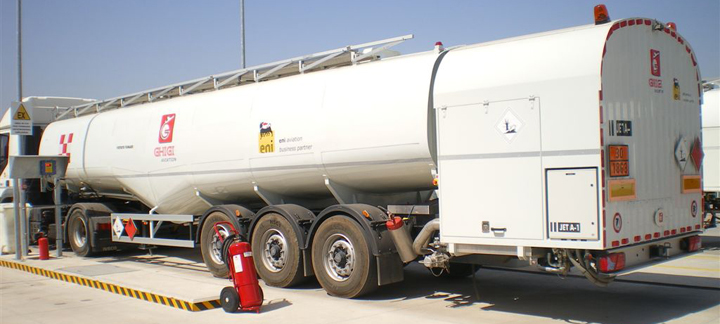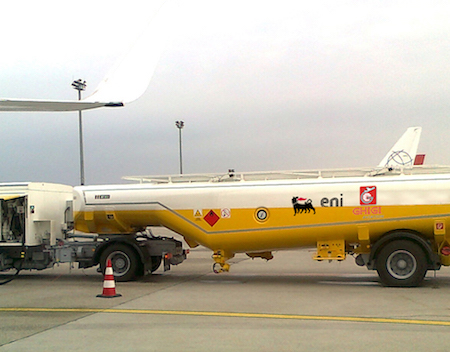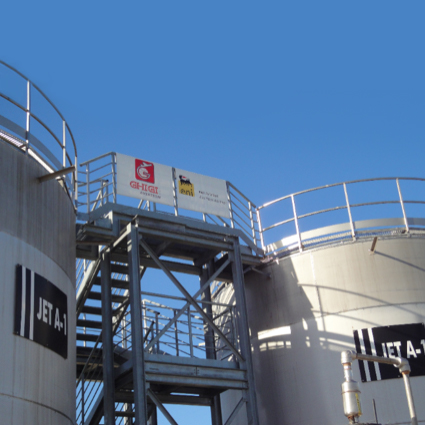Aviation fuels

Characteristics and performance of Eni products
During the second world war, aeroplane engines were developed to run on kerosene rather than aviation gasoline due to kerosene’s good combustion properties and lower risk of flammability. Kerosene, which was also cheaper than aviation gasoline, underwent continuous developments to allow it to meet the growing and increasingly complex demands of the aeronautical industry. Its widespread availability and use eventually led to steps being taken to standardize its characteristics.
Aviation fuels are derived mainly from the primary distillation of crude oil. Their most significant properties are their volatility, density, freezing point, flash point and ignition point. Aviation gasoline and Jet A-1 (a kerosene-type jet fuel) have maximum freezing points of – 58 °C and – 47 °C, respectively, meaning that they are required to guarantee engine performance up to those temperatures.
While the flash point of kerosene is generally around 40 °C – 70 °C, eni does not monitor the flash point of aviation gasoline, because gasoline-air mixtures are flammable even at temperatures below O °C. Ignition points are monitored for both gasoline and kerosene. For aviation gasolines, the minimum ignition point ranges roughly between 370 °C and 420 °C, while for kerosenes it varies between 200 °C and 260 °C.
Gasoline’s higher volatility compared with kerosene makes it ideal for use in internal combustion engines.

Jet A1
The Jet A-1 fuel sold by eni is produced to the most stringent technical standards, thus guaranteeing both its high quality and its compliance with the requirements set out in the industry standards “British MoD DEF STAN 91-91 and ASTM Standard Specification D1655 for Aviation Turbine Fuels – Jet A-1”. The air forces of Nato countries use 3P-8, which is identical to Jet A-1 for civil aviation, with the inclusion of special additives.
AvGas 100LL
Avgas is a high octane aviation fuel identified by two octane numbers. The first number indicates the octane rating tested to “aviation lean” standards, which produces results similar to the ratings set out in the Motor Octane Number (MON) standard intended for gasoline for ordinary automotive use. The second number indicates the fuel’s octane rating tested to the “aviation rich” standard, which aims to reproduce the demanding conditions of use in the aeronautical field, i.e. rich mixture, high temperatures and high manifold pressures. Aviation gasoline has a lower and more uniform vapor pressure than automotive gasoline, which enables it to remain in a liquid state at high altitudes and prevents the phenomenon known as vapor lock. The product sold by eni is an avgas 100LL (i.e. 100 low lead) containing the antiknock additive TEL, although in smaller quantities than are present in the high lead 100/130 gasoline that it has effectively replaced. Most planes with piston engines use 100LL, although studies are currently underway internationally to develop additives with improved environmental compatibility.

Quality of products and services
eni subjects Jet A-1 to more than 30 tests to ensure its compatibility with the standards required and only assigns the certificate of origin that will accompany the fuel on the various stages it passes through before being put into a plane’s fuel tank once all of these tests have been successfully completed.
eni’s laboratories are equipped with the cutting edge technologies and instrumentation required to apply the analytical protocol set out in “Aviation Fuel Quality Requirements for Jet A-1”.
To know more about ENI products, please browse the ENI’s Aviation Fuel brochure





